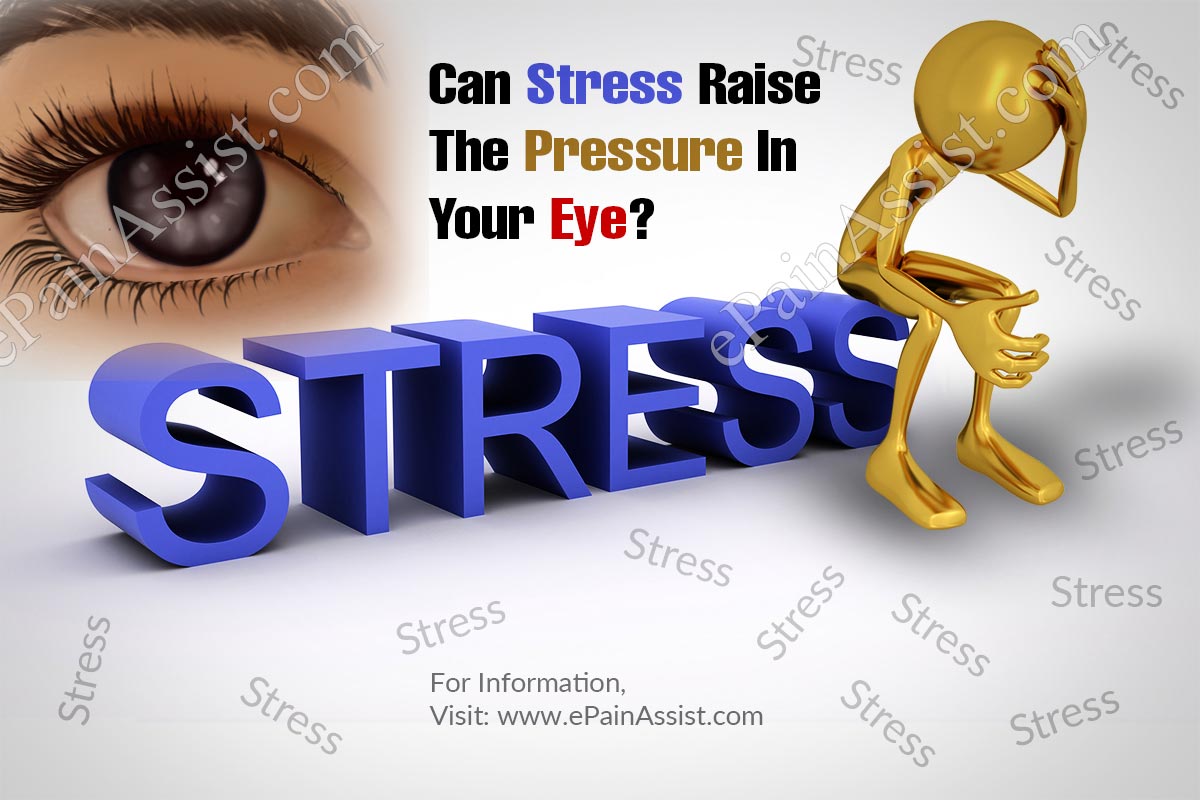Glaucoma is a devastating disorder that affects millions of individuals worldwide. Many evidence identifies the development of glaucoma is influenced by various factor mechanism such as increased intraocular pressure, psychological stress, decreased neutrophinesupply, hypoxia, ecotoxicity, oxidative stress, and the involvement of autoimmune processes. Among the factors, psychological stress appears to be a life-threatening factor which has a significant part in increase in ocular pressure and glaucomatous neurodegeneration. Scientists have related a life of stressful experience with glaucoma, finding that anxiety and depression are higher in patients with the undiagnosed glaucoma.

Can Stress Raise The Pressure In Your Eye?
A number of studies say that acute and chronic disorders in the human body are well connected to physiological and environmental factor. Many years ago, Socrates has quoted that “there is no illness apart from mind”. This may be the first evidence in the medical history that psychosomatic illness attributable to a psychosocial stressor. It is factual that stress is the cause of the onset of various disorders in the human body. Since from the 90s, scientist has provided much evidence about the relation of stress and anxiety to several eye disorders. It is clear that high stress can cause degeneration in the nerve cells and increase the intraocular pressure. Apparently, the stress became a risk-factor because of fewer nutrients nourishment to eyes, constriction of blood vessels and poor blood supply. If left untreated, it may raise intraocular pressure and will certainly cause vision loss and blindness.
Psychophysiological stress and high intraocular pressure can deliberately consume the vision in affected individuals. This is one of the key attributing factors to glaucoma, in particular, the incidence of acute angle-closure form. Literature has shown more evidence when emotional state of the patient is affected it may lead to intraocular pressure change. Stress can cause instability in the iris and makes it to swollen. Swollen iris obstruct the pupil and ciliary body obstruct the angle. Anxiety can dilate the pupil and resist the function of trabecular mesh. All these changes occur under the influence of an emotional state of the individuals. Pierre-Félix Lagrange, a French ophthalmologist has made a remark about glaucoma disorder as “sick eye in a sick body”. Emotion can influence the secretion of steroids which in turn affect the process of the volume of the aqueous humor in the eye.
A glaucoma patient has tense, nervous, and emotional character. They exhibit mood fluctuations, too much anxiety, and hypochondriacal tenderness. While compared to prolonged stress, shorter stress tend to increase more intraocular pressure in glaucoma patients. Prolong term stress stimulation was shown to increase intraocular pressure slightly in a group of non-glaucomatous individuals. Intraocular pressure in human body normally maintained through homeostasis. Many factors act upon intraocular pressure where stress and anxiety is the major key factor. Among other factors, intraocular pressure is more influenced by sympathetic and parasympathetic stimulation.
Chronic exposure to stress and age factor can cause irregularity in the immune system as well as increase the individual’s vulnerability to neuronal degeneration in glaucoma patients. Improper supply of oxygen and the resultant oxidative stress are the significant factors directly involved in neuronal damage and cause an alteration in the immune system during glaucomatous neurodegeneration. A very low level of blood oxygen means that less oxygen gets to the cells of the organ, including the cells of the eye. Prolong inadequate oxygen supply to eyes cause retinal dysfunction, cell injury, and cell loss.
Researchers have associated stressful life with many eye disorders including glaucoma, macular degeneration, cataracts, central serous choroidopathy, dry eyes, and other conditions. Among this disorder, stress is more associated with central serous choroidopathy/retinopathy. Blepharospasms, also well-known as eyelid twitching, can happen as an outcome of increased stress. In some individuals makes a random movement of eyes, a disorder called a nystagmus. Stress and overall weakness can make the occurrences of nystagmus.
Also Read:
- Android Apps For Stress Relief: An essential tool in self help therapy for stress reduction!
- Effects of Stress, Fear, Anger & Love On The Human Brain
- 25 Stress Busters that Can Help You Relax and Release Stress
- 14 Strategies to Deal with Stress after a Long Work Day
- 10 Tips to Control Your Outcome in Stressful Situations
- 6 Stress Management Techniques to Take Control of Your Own Life
- Stress Affects your Entire System and Not Just your Mind!
- How to Reduce and Manage Job and Workplace Stress?
